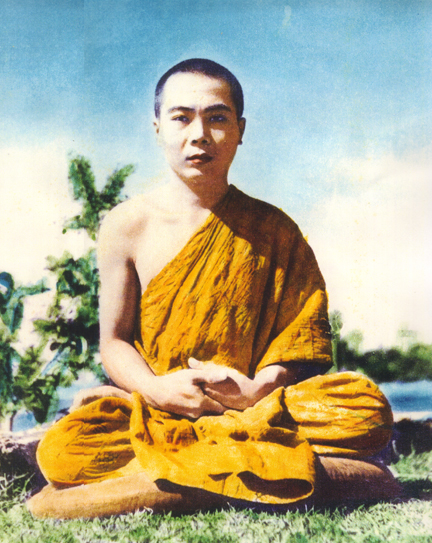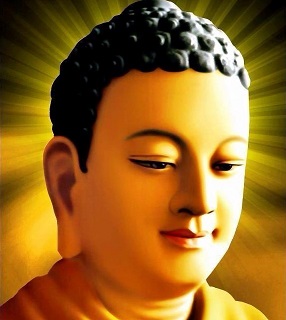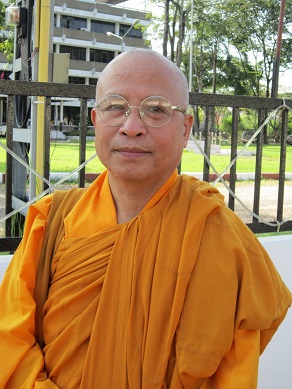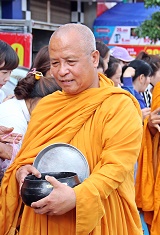Trang nhất » Tin Tức » ENGLISH
BUDDHIST VIEWS ON WOMEN
Chủ nhật - 15/10/2017 13:53Society of ancient India was brought in relief with many kinds of discrimination. According to Manu rules there were four main castes in social structure and this division caused to many troubles and brought back unhappy results to lower casters. It was more serious when we mention the position of women in such a society. The role of women in such situation had been severely restricted and minimized. One the men were incharge of main works and they decided almost important issues, the women only focused on some common and inferior duties. The clear evidence to us that seldom historical books or any ancient writing mentioned the capability or achievement of the women at that time.
According to Prof. K.T.S. Sarao, the changing modes can be described as “First parity, then patriarchal androcentrism and thereafter ascetical misogyny”. He also manages to show that the Buddha treated women at par with men within the Sangha, and that the patriarchal–androcentrism as well as the ascetical misogyny is not only not part of Buddhavacana but also post-Buddha. This argument sounds reasonable for it help: to explain the contradictory attitudes of Buddhism towards women.
It can be said that the Buddha was one of those who made a large change in attitude of ancient India and led a democratic government in which men and women are equal respectively. The Buddha had raised the status of women and brought them to a realization of their importance to society.
According to the Buddha, every women has the same ability to practice and attain any noble fruit of sainthood.
In Samyutta Nikaya, the Buddha states that : “whoever has such a vehicle, whether a man or woman shall indeed by means of that vihecle, come to Nibbana”. It means his teaching was opened for all human beings attaining Nibbana.
But sometimes the Buddha has blamed a woman about her characteristic determined. In Anguttara Nikaya runs that : “womenfolk are uncontrolled, envious, greedy and weak in wisdom”.
Blaming women’s characteristics that was expressed by the Buddha, have been found in some suttas. Because he wanted to show that love and sexual relation are dangerous for practice meditaion.
In pali literature, the Buddha’s main teaching to women was a method of education. It is well known that the Buddha advised king Pasenadi who came to him grieving that his queen, Mallika, had given birth to a daughter that a female offspring may prove even nobler than a male. The Buddha also taught Anathapindika’s daughter in law about seven kinds of wives. In the sigalovada sutta the Buddha has laid down five duties of a wife towards his husband.
In Vinaya Pitaka, there is records that Mahapajapati Gotami who strongly wants to join the Sangha but the Buddha refused her. Finally, after the her third requesting and by the intervention of Ven Ananda, can join in the Sangha.
However, the Buddha required that Bhikkhuni have to follow the Eight Chief Rules. The 8 chief rules are necessary to all Buddhist nuns as well as to the existence of the Buddhist Sangha. Therefore, these rules should be considered as the natural principles of religious life, indeed. By the way, the Buddha helped women recognize the truth, then took refuge in the Buddha doctrine, practiced it in order to the end of suffering and attain liberation.
According to Theravada vinaya, Bhikkhunis have to observe 311 precepts, compared to 277 precepts of Bhikkhus. Under the guidance of the Buddha and other respected Bhikkhus, many Bhikkhunis had attained sainthood. The Therigatha recorded liberating verses attered by many of them.
In Mahayana Buddhist literature,the path of Bodhisattva is suitable to anyone who devotes his or her life for the freedom of all living beings. Many Bodhisattvas appears in female form and their causes are appreciated. The lotus sutra record a well-know story of an eight-year-old girl possesses profound doctrine, engages Boddhisattvas practices, and becomes Buddha.
To sum up: we could say that, the Buddha had a very positive and revolutionary attitude towards woman. He opened the doors deathlessness for the equal benefit of both men and women. This fact is considered as an important event is the history of world religion. The spiritual achievement of many female Arhants has proved the holy statement of the Buddha that the value of a person does not depends on his or her gender and family background, but wisdom and virtue of that person.
Những tin mới hơn
Những tin cũ hơn
•Tin Được Quan Tâm Nhiều
-
 Nhóm Thiện Nguyện Tịnh xá Ngọc Sơn ủng hộ từ thiện nhân mùa Phật Đản tại Ấn Độ.
Nhóm Thiện Nguyện Tịnh xá Ngọc Sơn ủng hộ từ thiện nhân mùa Phật Đản tại Ấn Độ.
Bố thí là nền tảng cơ bản để kết nối yêu thương, sẻ chia cuộc sống nhằm làm vơi bớt nỗi đau bất hạnh... -
 KHÓA TU MỘT NGÀY CHÁNH NIỆM NIỆM PHẬT TẠI TỊNH XÁ NGỌC SƠN.
KHÓA TU MỘT NGÀY CHÁNH NIỆM NIỆM PHẬT TẠI TỊNH XÁ NGỌC SƠN.
Vào lúc 8 giờ sáng ngày 21/10/2017 (nhằm ngày 2/9/ Đinh Dậu), khóa tu một ngày Chánh Niệm Niệm Phật... -
 Bữa cơm chuyển nghiệp lần 5
Bữa cơm chuyển nghiệp lần 5
Sáng ngày 12/10/2017 ( Nhằm ngày 23/8/ Đinh Dậu), chư tăng và Phật tử Tịnh xá Ngọc Sơn đã thân lâm... -
 Phát quà trung thu và trao học bổng cho các cháu thiếu nhi
Phát quà trung thu và trao học bổng cho các cháu thiếu nhi
Tết Trung thu là một trong những lễ hội truyền thống có ý nghĩa quan trọng trong đời sống văn hóa... -
 Chương trình đón mừng đại lễ Phật Đản PL. 2560 tại Tịnh xá Ngọc Sơn
Chương trình đón mừng đại lễ Phật Đản PL. 2560 tại Tịnh xá Ngọc Sơn
Vào lúc 18 giờ ngày 14/4/ Bính Thân, dưới sự chứng minh của TT. Giác Trí cùng chư tôn Đức Tăng, Ni,... -
 Đại lễ Khánh thành bảo tháp Xá lợi Phật - Tịnh xá Ngọc Sơn
Đại lễ Khánh thành bảo tháp Xá lợi Phật - Tịnh xá Ngọc Sơn
Sáng ngày 7.4.2016 (01.3. Bính Thân) Tịnh xá Ngọc Sơn, xã Phước Sơn, huyện Tuy Phước, tỉnh Bình Định... -
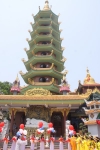 Công trình Bảo tháp xá-lợi ở TX. Ngọc Sơn
Công trình Bảo tháp xá-lợi ở TX. Ngọc Sơn
Nhằm tạo điều kiện cho mọi người không đủ phước duyên đến các nước để chiêm bái xá-lợi, Thượng tọa... -
 Lễ khánh thành bảo tháp thờ xá lợi Phật tại Tịnh xá Ngọc Sơn
Lễ khánh thành bảo tháp thờ xá lợi Phật tại Tịnh xá Ngọc Sơn
Ngày 7/4/1016 (nhằm ngày 01/3 năm Bính Thân), PL. 2559 tại Tịnh xá Ngọc Sơn, xã Phước Sơn, huyện Tuy...
•Tập San Đuốc Sen
-
 Nhóm Thiện Nguyện Tịnh xá Ngọc Sơn ủng hộ từ thiện nhân mùa Phật Đản tại Ấn Độ.
Nhóm Thiện Nguyện Tịnh xá Ngọc Sơn ủng hộ từ thiện nhân mùa Phật Đản tại Ấn Độ.
Bố thí là nền tảng cơ bản để kết nối yêu thương, sẻ chia cuộc sống nhằm làm vơi bớt nỗi đau bất hạnh... -
 KHÓA TU MỘT NGÀY CHÁNH NIỆM NIỆM PHẬT TẠI TỊNH XÁ NGỌC SƠN.
KHÓA TU MỘT NGÀY CHÁNH NIỆM NIỆM PHẬT TẠI TỊNH XÁ NGỌC SƠN.
Vào lúc 8 giờ sáng ngày 21/10/2017 (nhằm ngày 2/9/ Đinh Dậu), khóa tu một ngày Chánh Niệm Niệm Phật... -
 Bữa cơm chuyển nghiệp lần 5
Bữa cơm chuyển nghiệp lần 5
Sáng ngày 12/10/2017 ( Nhằm ngày 23/8/ Đinh Dậu), chư tăng và Phật tử Tịnh xá Ngọc Sơn đã thân lâm... -
 Phát quà trung thu và trao học bổng cho các cháu thiếu nhi
Phát quà trung thu và trao học bổng cho các cháu thiếu nhi
Tết Trung thu là một trong những lễ hội truyền thống có ý nghĩa quan trọng trong đời sống văn hóa... -
 Chương trình đón mừng đại lễ Phật Đản PL. 2560 tại Tịnh xá Ngọc Sơn
Chương trình đón mừng đại lễ Phật Đản PL. 2560 tại Tịnh xá Ngọc Sơn
Vào lúc 18 giờ ngày 14/4/ Bính Thân, dưới sự chứng minh của TT. Giác Trí cùng chư tôn Đức Tăng, Ni,... -
 Đại lễ Khánh thành bảo tháp Xá lợi Phật - Tịnh xá Ngọc Sơn
Đại lễ Khánh thành bảo tháp Xá lợi Phật - Tịnh xá Ngọc Sơn
Sáng ngày 7.4.2016 (01.3. Bính Thân) Tịnh xá Ngọc Sơn, xã Phước Sơn, huyện Tuy Phước, tỉnh Bình Định... -
 Công trình Bảo tháp xá-lợi ở TX. Ngọc Sơn
Công trình Bảo tháp xá-lợi ở TX. Ngọc Sơn
Nhằm tạo điều kiện cho mọi người không đủ phước duyên đến các nước để chiêm bái xá-lợi, Thượng tọa...
•Chia Sẻ Cùng Bạn Đọc
-
 Văn cảm tưởng về Thầy nhân mùa Vu Lan Báo Hiếu
Văn cảm tưởng về Thầy nhân mùa Vu Lan Báo Hiếu
Hôm nay nhân mùa Vu lan báo hiếu, Thầy cho chúng con được dâng lên lời cảm niệm này, thành kính cúng... -
 CLB Tình nguyện Sen Hồng sinh hoạt buổi đầu tiên
CLB Tình nguyện Sen Hồng sinh hoạt buổi đầu tiên
Ngày 17/4/2016, dưới sự chứng minh của HT. Giác Pháp - Chủ nhiệm Câu lạc bộ Tình nguyện Sen Hồng,... -
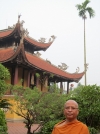 Ông Bụt của tôi
Ông Bụt của tôi
-
 Giá trị của công việc
Giá trị của công việc
Một chàng trai trẻ vừa tốt nghiệp Đại học loại xuất sắc nộp đơn dự tuyển vào vị trí quản lý cấp thấp... -
 Giá trị của cuộc sống
Giá trị của cuộc sống
Cuộc sống luôn 'nói chuyện' với ta qua những điều giản dị và không ngờ đến nhất.
•Hình Ảnh Tịnh Xá Ngọc Sơn
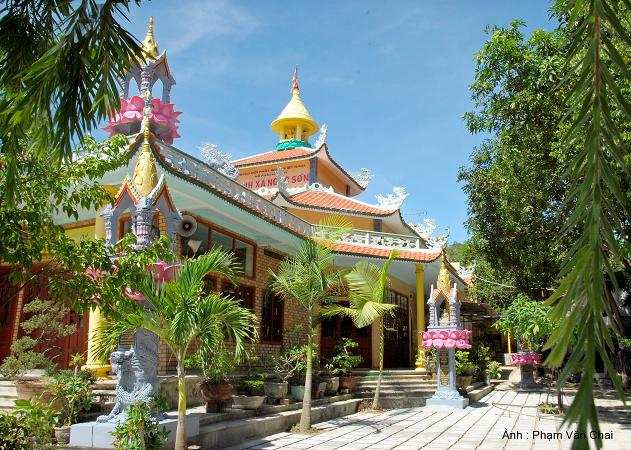 |
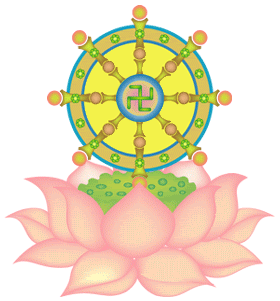 |

 Xem phản hồi
Xem phản hồi Gửi phản hồi
Gửi phản hồi